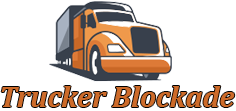
To truly solve business challenges, says Tyler Dietrich, his IT team must “become the role” of the person they’re trying to help.
Image: HDT graphic/Nussbaum photos
Before Nussbaum Transportation took a chance on him 10 years ago, Tyler Dietrich’s life looked very different. Today, this 2024 HDT Emerging Leader is director of product-IT at the Illinois-based truckload carrier.
As a child, Dietrich was home-schooled and after finishing his studies often spent his afternoons at a factory owned by his grandfather.
“My grandpa showed me a 2,000-pound bin of used parts and bolts and said, ‘Start sorting,’” Dietrich recalls. That may have planted the seeds of his interest in organization and streamlining processes.
After high school, however, he dropped out of college and found himself stuck in a cycle of bad decisions. But a spiritual transformation marked a turning point.
“Thankfully, God intervened and changed my life,” he says.
How Dietrich Got His Chance at Nussbaum Transportation
Jeremy Stickling, now Nussbaum’s head of HR, knew Dietrich from church, recognized the changes in the young man, and offered him a chance to interview for a recruiting position.
“I wasn’t qualified, but I told [CEO] Brent Nussbaum during my interview, ‘If you hire me, I will work as diligently and as hard as anyone here,’” Dietrich says.
The young man was eager to prove himself. Maybe a little over eager, he admits sheepishly.
Within months, he was not only meeting his driver recruiting targets but also actively seeking ways to improve. He called other trucking companies for information on their driver compensation packages and recruitment strategies and presented his findings to the company’s leadership.
“I scheduled a meeting with our CEO, Bill Wettstein (who has since added president to his title) and showed him my research. He was like, ‘You know you’re just in recruiting, right?’” Dietrich laughs.
Undeterred, he started using Microsoft Excel to create tools to analyze recruitment data, including determining which recruiters had the best and worst turnover numbers.
Creating Custom Tools for Pricing
In less than a year, Dietrich was asked to start the company’s pricing department, where he worked to leverage data on bids and market rates. Now-CIO Douglas Knepp, recognizing the young man’s passion for working with data, worked with him on “real” programming and connecting him with the developer team.
In his nomination of Dietrich for the Emerging Leaders award, Wettstein explained that the custom software he developed drastically improved the company’s process for responding to bids from customers.
“The custom software made it easy for each department to work together and collaborate to provide solutions to our shippers that provided value and increased profits,” Wettstein said.
In fact, the resulting tool, Dietrich says, is something other trucking companies have asked if they could buy.
“We built something real. And that was, I think, where they really decided they would like to see me move more to the IT side.”
As Wettstein said, “Tyler’s ability to work with multiple departments to create and implement solutions is outstanding.”
That ability is key in his role as director of product – IT.
Dietrich reports to the CIO and is responsible for identifying areas of improvement in multiple areas of the business, then working with his team of product managers and the software development teams to provide solutions.
So Just What Does a Director of Product Do?
Dietrich’s responsibilities now revolve around bridging the gap between business needs and technological solutions. He is part of a team that uses the latest technology to solve complex problems within the company, focusing on outcomes rather than specific tasks.
“In the modern, competitive technology age, it doesn’t work anymore to just hand a list of tasks to the engineers and expect them to get it right,” Dietrich explains.
Traditionally, business people have gone to the software engineers and said, “I need A, B, C, D, and E,” he says.
“They toss it over the wall, and the engineering team spend six months, and they say, ‘Here’s A, B, C, D, and E’ And the team in the business goes, ‘Well, this doesn’t quite work.’ And the engineering team says, ‘Sorry, we’re on to the next project.’
“That is just a downward spiral.”
In product management, Dietrich explains, instead of a list of tasks that business people think will accomplish what they want to do, they look at what outcomes the team is trying to accomplish and then figure out how to get there.
The product manager works with the business people, software engineers and designers. His team immerses themselves in the business, understanding the challenges and finding the best tools to address them.
“You’ve got to become the role,” he explains. “You have to live, walk in the shoes, sit in the chair and take tons of notes.”
Improving Load-Finding Efficiency
One of his recent projects involved improving load-finding efficiency by 25%.
“We pull in all 3PL brokered loads automatically on the back end and match them up with potential drivers. Instead of going through multiple broker websites, our load finders can now do the job in 30 seconds,” Dietrich says.
For that project, he says, one of his team sat with a load finder for an hour and covered the desk with dozens of sticky notes, figuring out how things related, what parts were hard, why she kept having to pull out a calculator.
Staying Ahead of the Curve in a Fast-Evolving Industry
This focus on efficiency and innovation is central to Dietrich’s leadership philosophy, which emphasizes the need to stay ahead of the curve in an industry where technology is rapidly advancing.
When asked what he’s most proud of, he points to the team he built during his time leading the business analytics department, which grew out of the pricing team.
“Seeing those three guys flourish and establish themselves after I left is definitely my biggest accomplishment,” he says.
“Tyler is gifted to be an excellent bridge between IT and areas of the business such as operations, accounting, HR, safety, etc.,” Wettstein said. “Nussbaum is blessed to have someone with the wide array of talents Tyler brings to work every day.”
What Makes a Good Leader?
When asked what makes a good leader, Dietrich’s response is clear and direct: “Your success is your people succeeding. If you don’t have that, it’s over. People will quit, they won’t be engaged, and your team won’t thrive.”
This people-first mentality drives his leadership style, where he emphasizes the importance of giving credit where it’s due and ensuring that his team members feel valued and supported.
Looking ahead, Dietrich is driven not by titles or status but by the desire to make a meaningful impact.
“I like hard decisions. I love a problem that no one else can figure out,” he says. While he’s not necessarily aiming for upper management, he is committed to continuing to push boundaries and find innovative solutions at Nussbaum.







